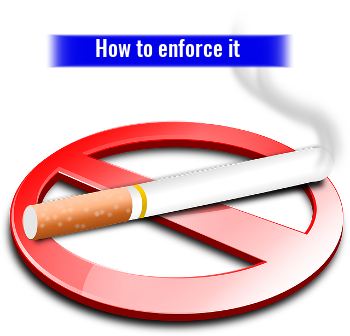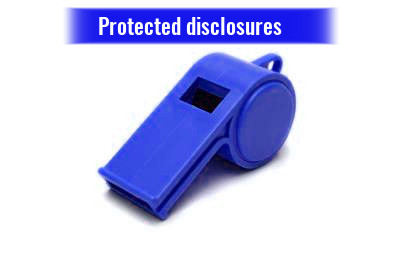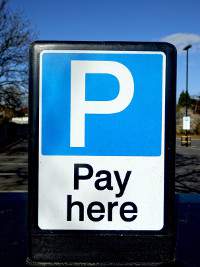The Employment Rights Advice Blog
 Articles, news and updates on employment law in Ireland
Articles, news and updates on employment law in Ireland
for employees and employers
____________________________________________________________________________________________________________________________________________________________________________________________________________________________________________________________________________________________________________________________________________________________________________________________________________________________________________________________
Time to update your procedures in line with recent whistleblower legislation.
What you need to know about The Protected Disclosures Act 2014
UPDATE 2022
The Protected Disclosures (Amendment) Act 2022 was signed into law on 21 July 2022. It becomes effective from 1st January 2023. It updates the Protected Disclosures Act 2014, mentioned below.
The main changes introduced by the Act are:
-
The scope of the Protected Disclosutes Act 2014 is widened regarding the reporting of breaches of European Union Law.
-
Protections for shareholders, board members,volunteers, unpaid trainees and job aplicants when they make a protected disclosure.
-
Organisations with more than 50 employees are required to have policies and processes for protected disclosures.
-
A shifting of the burden of proof in penalisation cases from the employee to the employer. From 1st January 2023 the employer must prove that the alleged victimisation was not as a direct result of the employee making a disclosure under the Protected Disclosure Act 2014.
-
The Office of the Protected Disclosures Commissioner will open for business on 1st January 2023.
The Protected Disclosures Act 2014 was enacted on 15 July 2014. Its aim is to provide the best protection possible for whistleblowers in Ireland. Irish employers, in particular need to make sure that they are compliant with the act.
What does the act do?
The legislation covers all areas. It encourages employees to report “relevant wrongdoings” to the employer in the first instance. The employer is required to facilitate the whistleblower. The act protects workers from being penalised for blowing the whistle on “relevant wrongdoings”
What protection is available for the worker who makes a protected disclosure?
The worker is protected from penalisation, or the threat of penalisation. This includes suspension, dismissal, demotion, unfair treatment, being overlooked for promotion. An employer can be held liable if you allow another person threaten to or penalise the whistleblower.
There is civil and criminal immunity for employees who make protected disclosures.
A worker can apply to court for relief such as reinstatement or re-engagement in another similar position.
False disclosures are not covered.
What are relevant wrongdoings?
Relevant wrongdoings include criminal offences, failure to comply with a legal obligation, environmental, health and safety risks, public funds misuse,and the alteration or destruction of evidence relating to these wrongdoings.
The definition of worker covered is quite broad. It includes, employee, former employee, contractor,agency worker, trainee, and member of An Garda Siochana.
What is the penalty?
An award of five times an employee's annual income can be made for an unfair dismissal as a result of a protected disclosure by the employee. This is a major increase when compared with a maximum of two years income under normal unfair dismissal legislation.
How much service must an employee have in order to obtain the protection of the Protected Disclosures Act?
There is no minimum service requirement under the act. An employee can bring a claim as soon as they commence employment, if the circumstances arise.
What should an Irish employer do next?
The first thing you should do as an Irish employer is, draw up and implement a separate procedure for protected disclosures. Do not simply rely on your existing disciplinary procedures.
It may prove hard to defend a claim for unfair dismissal under protected disclosure legislation, if you cannot show that you followed the procedures for dealing with protected disclosures. If you do not have procedures in place, or if they are not fair then you are at risk of a major award being made against you in the event of a claim.
Apart from the cost of compensation, there is also the bigger question of damage limitation. The Act allows for a tiered disclosure format.
The employee should be encouraged to disclose the wrongdoings to the employer in the first instance.
The second tier is to a prescribed person. This could be a regulator, for example.
The third tier involves public disclosure, including the media.
You can see therefore the importance of encouraging the employee to disclose the wrongdoing to the employer in the first instance.
Set up the procedures now. Don't wait until it is too late.
Policy and training
The whistleblowing policy should make it clear that any acts of wrongdoing, especially those mentioned in the act are not acceptable in the organisation. Every employee, contractor, agent and others who deal with the company should be made aware of this fact. This has a dual benefit. It helps prevent wrongdoing and it encourages the whistleblower to report the matter internally. If you are ambiguous in your message, then the whistleblower may feel that it is a waste of time reporting it internally and your time will be taken up dealing with a much bigger problem when disclosures are made outside the organisation.
Train employees in how to report relevant wrongdoings and what to do when receiving such a disclosure.
You should consider appointing a dedicated whistleblowing official. This would have to be someone who is trusted by all staff.
If a complaint is made it should be exhaustively investigated. Update the person who has made the complaint where possible, so that they can see that action is being taken. Regularly review the policy to see if it can be improved upon.
What if I have to discipline the whistleblower for another reason?
Remember the high level of compensation which can be awarded and proceed with care. Take careful note of the evidence against the employee. Ensure not only that you comply with fair procedure, but that you are seen to follow it. You should take advice from an expert. It can help to have a fresh pair of eyes look at the problem.
What about dismissals which took place before the Act became law?
The act is retrospective. This is to protect employees who made recent protected disclosures. It may have the effect of re-branding a dismissal under the Protected disclosures Act. What may have been a straight forward unfair dismissal claim before the act, may now be regarded as a protected disclosures claim, leading to larger compensation payments.
Act now.
Code of Practice on Protected Disclosures Act, Download here
If you would like to discuss any of the matters discussed in this article, please contact us using the orange Tell Me More button below, and we will call you back at a time that suits
Spread the knowledge. If you found this article useful, please like and share using any of the social buttons below.
Lay off, Short time, Reduced working week
What to do when facing a temporary economic challenge
When you hire a new employee, you probably do not give much thought to economic difficulties down the line. That is why your contract of employment should deal with that contingency.
If you do not have a clause in the terms and conditions of employment allowing for the introduction of lay off or short time working, then you cannot introduce them without the agreement of your employees.
What is a temporary lay off?
If you are unable to provide work for your employee, and you believe that this is a temporary situation then you should consider the option of temporary lay off. You must notify the employee of the lay off before the work finishes. It is best to consult with your employees and explain the reasoning behind the decision to introduce lay off. It is a difficult topic, but by communicating with your staff it can strengthen morale when the lay off period is over and work has resumed.
The Redundancy Payments Acts 1967 – 2012 provides a form RP9 download here for providing the necessary information to each employee. Failure to notify could result in a claim for redundancy payment. A lay off is where there is a complete halt in work available for a temporary period.
What is short time working?
It arises in similar circumstances to a lay off. The main difference is that some work is available. When working hours are reduced by more than 50% of their normal rate.
Claiming redundancy payment
Employees who have been on lay off for 4 or more consecutive weeks or short time for a total of 6 weeks in a thirteen week period, may claim redundancy payments.
What about a reduced working week?
This is where an employee is working 50% or more of their normal hours . They cannot claim redundancy in those circumstances and therefore the implementation of a reduced working week must be by agreement.
The benefits of consultation
The loss in available work is a stressful situation for you as well as your employees. By consulting with your staff it helps to build trust and bring about change. Your employees will prefer to hear the news from you. The rationale for reduction in hours available will let staff see that it is due to circumstances beyond your control. You may well get some positive input from staff members on how to introduce efficiencies in work practice. The key to effective communication is preparation,clarity and moving forward.
See also article : Covid-19 Can I use lay off and short time to cope with Covid-19 ?
What should I do next?
If you would like to talk to an expert please get in touch using the orange Tell Me More button below.
Spread the knowledge. If you found this article useful, please like and share using any of the social buttons below.
A Social Media Policy
Why you need one now
The fact that you are reading this article online is a good indicator that you are internet savvy. Have you given much thought to the huge growth in social media and how it can affect your business?
If you do not have a social media policy, you are leaving your business open to, time wasting by staff, breaches of privacy, cyber bullying, brand damage, disciplinary difficulties, data ownership disputes and more.
How can I develop a social media policy?
Depending on the size and unity of your business you should pick a team of relevant employees to help develop a customised social media policy. If you run a small enterprise, then you can draw up the policy yourself or get assistance from experienced professionals. You should make a distinction between work and private lives. It should protect you from the actions of employees (vicarious liability) . Keep it flexible enough so that it can adapt to the changing social media landscape.
What should I include in a social media policy?
These are some of the main points to include in your policy. Each policy is customised to reflect the individual needs of each business. Your business is unique. You should take the time and trouble to develop a social media policy which reflects this.
-
Network security
A general ban on downloading software will help control the spread of viruses
-
Acceptable behaviour
Define what constitutes unacceptable behaviour and relate it to each of the methods of electronic communication, Email, internet, Forums, smart phones, tablets, computers, social networking sites, blogs.
Make sure that your social media policy reflects and endorses your bullying and harassment policy .
-
Data protection.
Your employees should be aware of possible breaches of data protection legislation from mentioning sensitive and confidential information online.
-
Staff monitoring
If you intend checking up on existing staff's use of social media you should include this in the policy and make staff aware of it. Most surveys show that staff would temper their business related comments if they knew that management could monitor them.
-
Intellectual property
This is the creative material belonging to the company. You should clearly identify the intellectual property of the business, eg logo, design, brand.
-
Recruitment
Let candidates know that you have a policy of monitoring social media sites and why. Retain copies of data gathered. If your decision not to hire is affected by something you discover online, make sure that it does not breach anti discrimination legislation
-
Productivity
How does the use of social media affect productivity? It can have a positive effect if it increases brand awareness. It can have a negative effect if it is merely a time wasting exercise.
-
Disciplinary Matters
When disciplining an employee in connection with their use of social media, make sure that you follow closely you disciplinary procedures . Make sure that the punishment is proportionate to the offence. You have a right to protect the reputation of your company and to carry out your duty of care towards your other employees. At all times you must follow fair process.
-
BYOD
If you have a bring your own device policy , your social media policy should cover this. Privacy settings, security, to reduce the risk of unauthorised access must be put in place and reviewed regularly.
-
Training and communication
You should offer training and communicate regularly with your employees in relation to use of social media. If you take a positive view of the use of social media, which is then communicated to all staff then you can build a strong team of individuals dedicated to building a great brand presence online.
Where can I get more information and assistance?
See recent case on privacy at work
See Social Media Monitoring in the Workplace
See Writing a Social Media Policy
Contact us using the orange Tell Me More button below and we will call you at a time that suits
Spread the knowledge. If you found this article useful, please like and share using any of the social buttons below.
Smoking in the workplace
Why you need a policy
 Smoking in enclosed places of work is banned in Ireland since the introduction of the Tobacco Smoking (Prohibition) Regulations 2003.
Smoking in enclosed places of work is banned in Ireland since the introduction of the Tobacco Smoking (Prohibition) Regulations 2003.
This introduced a ban in most work areas with the exception of the following:
-
Prisons
-
Garda station detention areas
-
St. Patrick's institution
-
Nursing homes
-
Hospices
-
Religious order homes
-
The Central Mental Hospital
-
Psychiatric hospitals
-
Maternity homes
-
Hotel, guesthouse and B&B bedrooms
-
Third level educational residential facilities
Outdoor smoking areas
An employer can provide an outdoor smoking area if they wish. It must comply with the strict definition contained in legislation.
The law has defined an outdoor area as:
-
A place or premises, or part of a place or premises, that is wholly uncovered by any roof, fixed or mobile.
-
An outdoor place or premises that is covered by a roof, so long as not more than 50% of the perimeter (outside) is covered by a wall, windows, gate or similar.
Smoking is banned in the common areas of a building.
Is there a need for a smoking in the workplace policy?
You may be tempted to say that a policy is not needed because you can rely on the law. The law however places certain obligations on the employer to ensure that the ban on smoking in the workplace is implemented. You may be fined up to €3000 for a breach of the legislation.
What is expected from the employer?
An employer must use its best endeavours to ensure compliance with the ban on smoking legislation. This involves making customers, visitors and staff aware of the ban on smoking and what to do in the event of a breach.
What are the minimum efforts an employer must make?
-
Develop and implement an effective smoke-free policy which involves clear communication and procedure for dealing with a breach
-
Display “No smoking” signs to alert all to the existence of the ban on smoking.
-
Remove all ash trays and other smoking related paraphernalia
It is good practice to incorporate a smoke-free policy in the contract of employment for all workers. This ensures that the employee has an opportunity to become familiar with the procedures. The policy should identify the members of staff who have responsibility for its implementation, what to do in the event of a breach and what disciplinary procedures should be followed.
Download Guidance for Employers and Managers Public Health (Tobacco) Acts here ;
What about e cigarettes?
For more information on the need for an electronic cigarettes policy click here
Contact us for help using the orange Tell Me More button below.
Spread the knowledge. If you found this article useful, please like and share using any of the social buttons below.
Latest Employee Blogs
- Performance Improvement Plan or Exit Strategy?
- Whistleblower awarded five years salary by Workplace Relations Commission
- Unlawful COVID-19 pay cut
- Unfair Redundancy Case
- How to raise a problem at work
- Trade Secrets and Whistleblowing
- Is your fixed term contract valid?
- What is it like to bring an unfair dismissal claim?
- Employer relocation
- End of P45
Latest Employer Blogs
- Changes to probationary period
- Redundancy Update
- COVID-19 Vaccination Data in the workplace
- Statutory Sick Pay Scheme
- The Right to Disconnect
- Covid-19 Can I use lay off and short time to cope with Covid-19 ?
- Covid-19 (The Coronavirus) Tips for employers
- Social Media Monitoring in the Workplace
- Using 3rd party CCTV footage
- Do I need a Data Protection Officer ?











